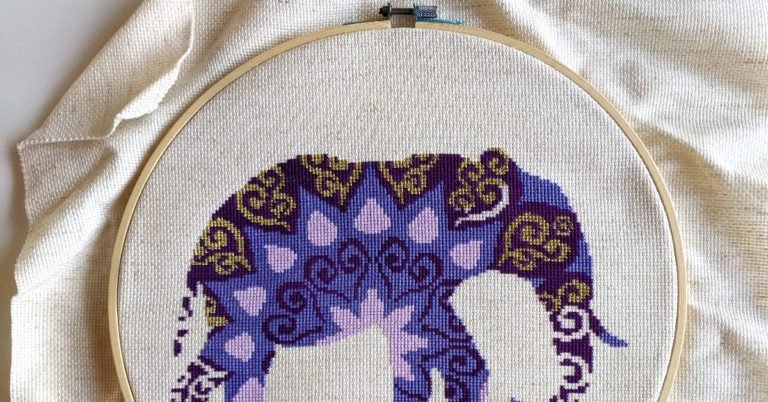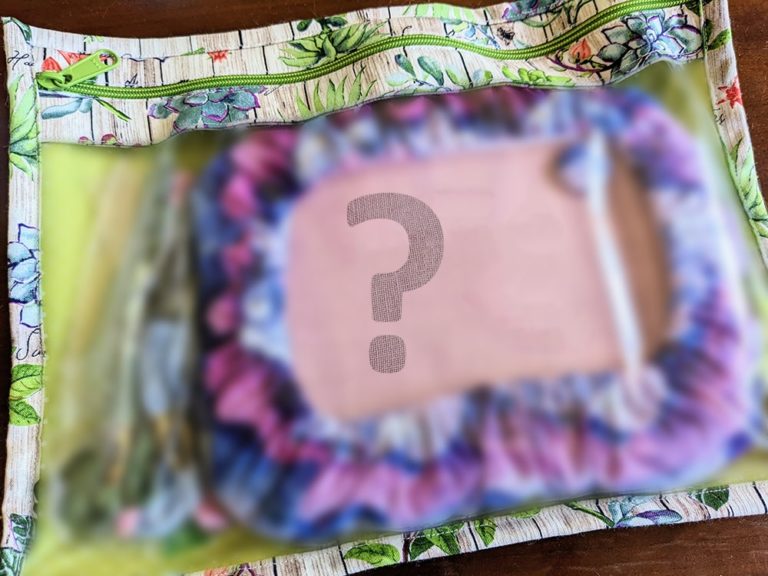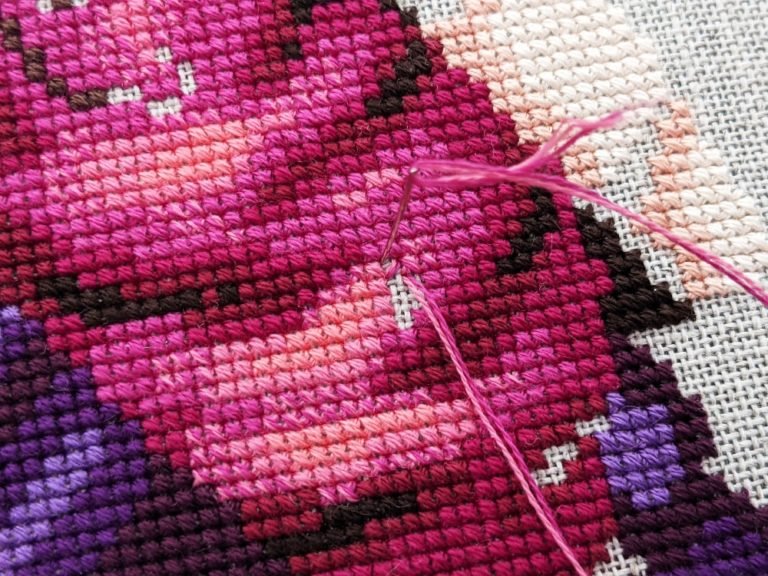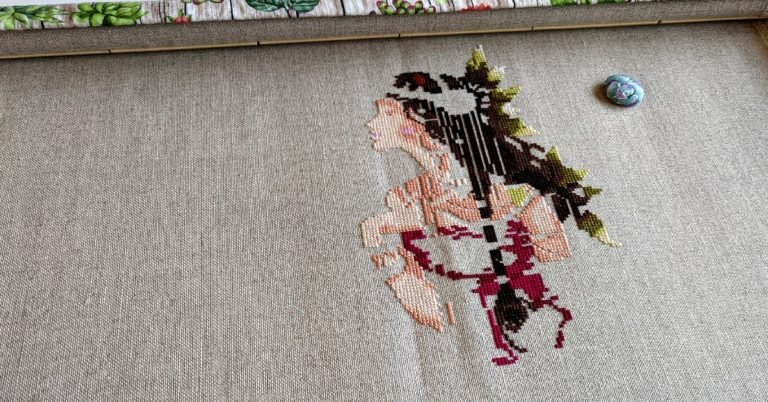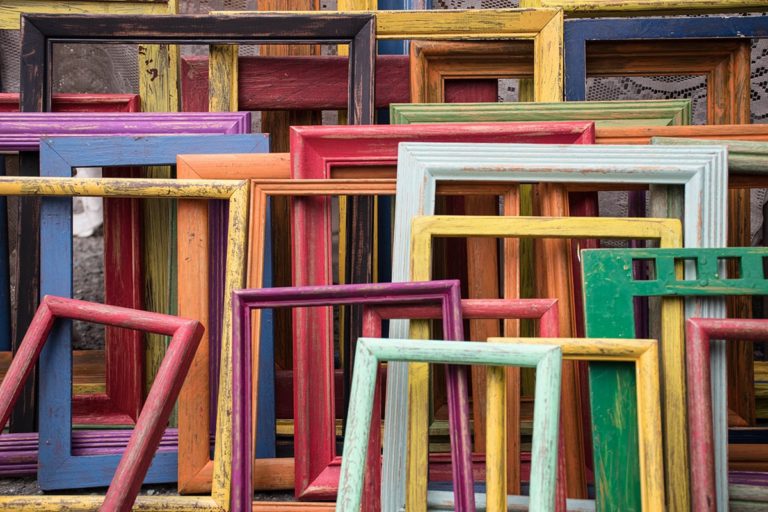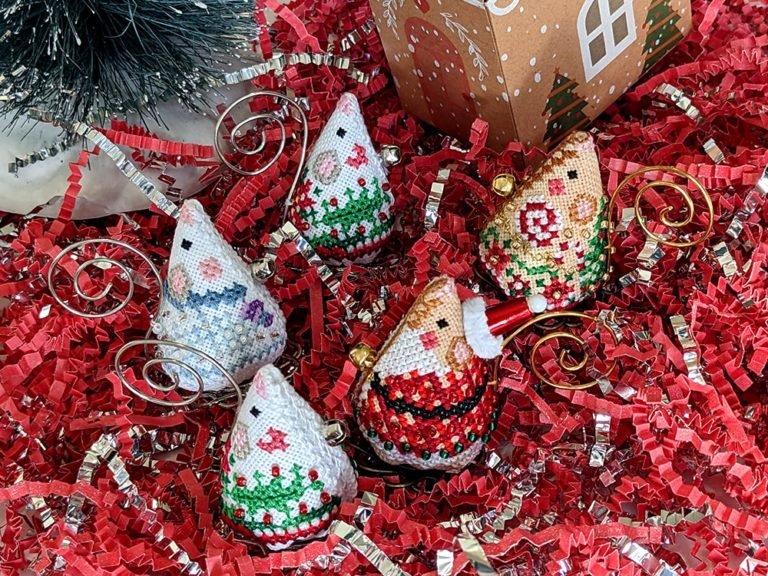11 Tips for Cross Stitching on Black Fabric
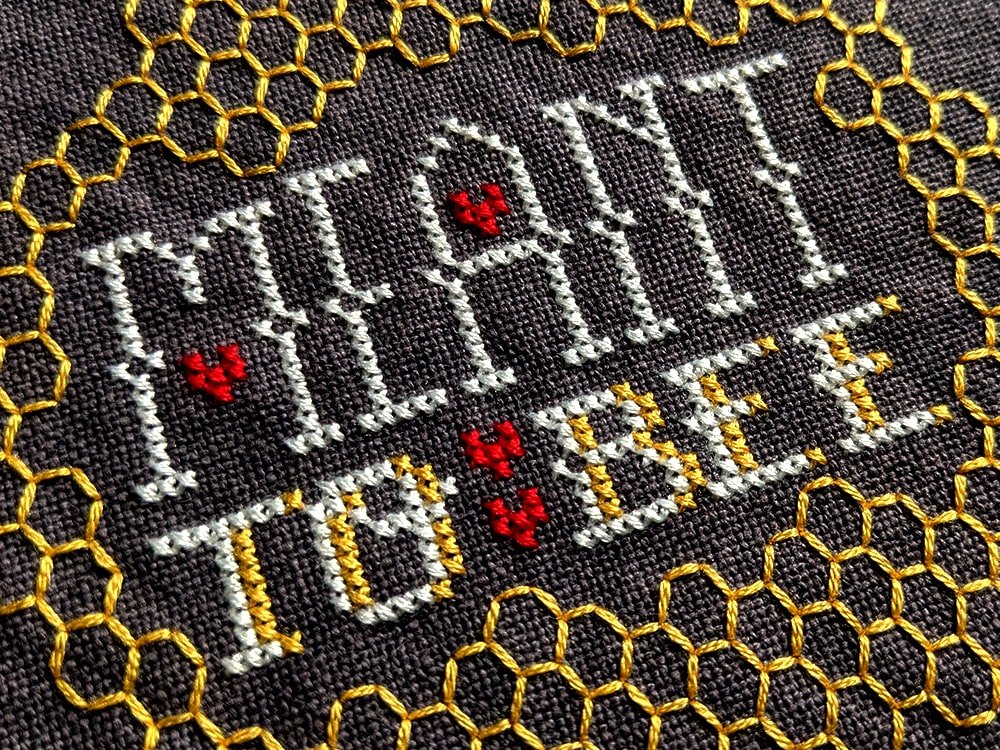
Who doesn’t love stitching on black fabric? Well, most stitchers.
The final result can look amazing but stitching on black fabric isn’t the easiest feat.
From chalkboard patterns to galaxies and everything in between, black fabric is the perfect addition to these themes.
Cross stitching on black fabric can be a challenge, but there are tricks to help you stitch on black fabric more easily.
WANT FREE CROSS STITCH PATTERNS?
Sign up for my newsletter to get access.

Here are 11 tips for cross stitching on black fabric:
1. Cross Stitch Using Natural Daylight
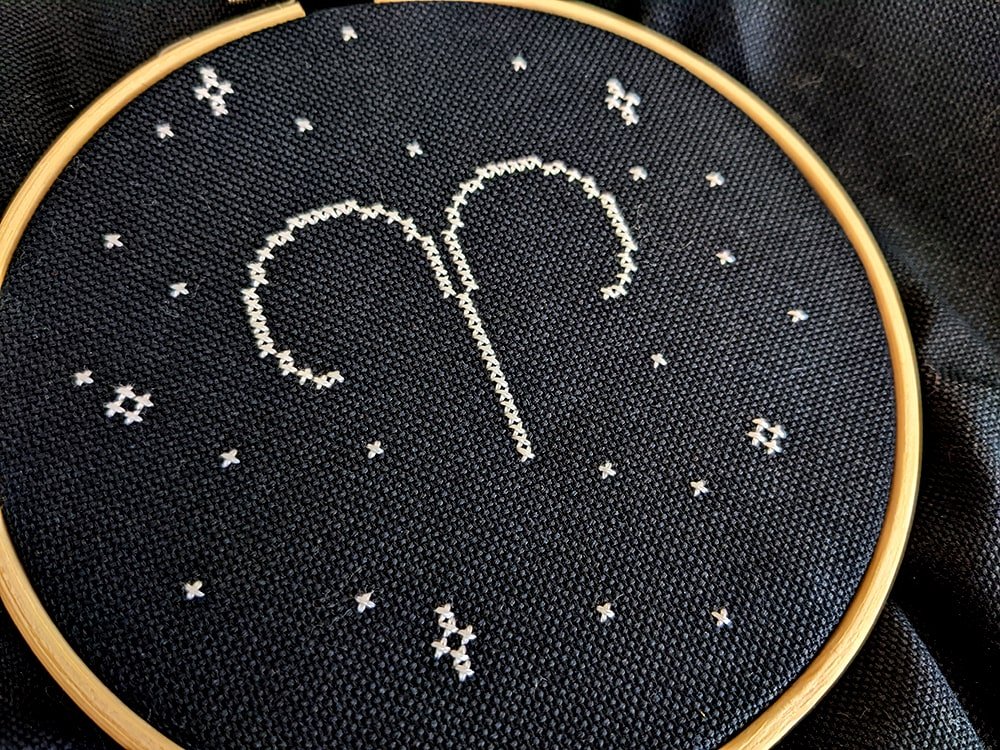
Natural daylight is my favorite time to stitch. Colors show up more accurately and I can easily distinguish the holes in my fabric.
Different times of the day produce different color temperatures. Daylight has a bright, cool color light that is bluer in tone. This will produce a whiter light than other times of the day.
Take advantage of this great opportunity to stitch on black or dark colored fabrics.
2. Cross Stitch Under Direct Lighting
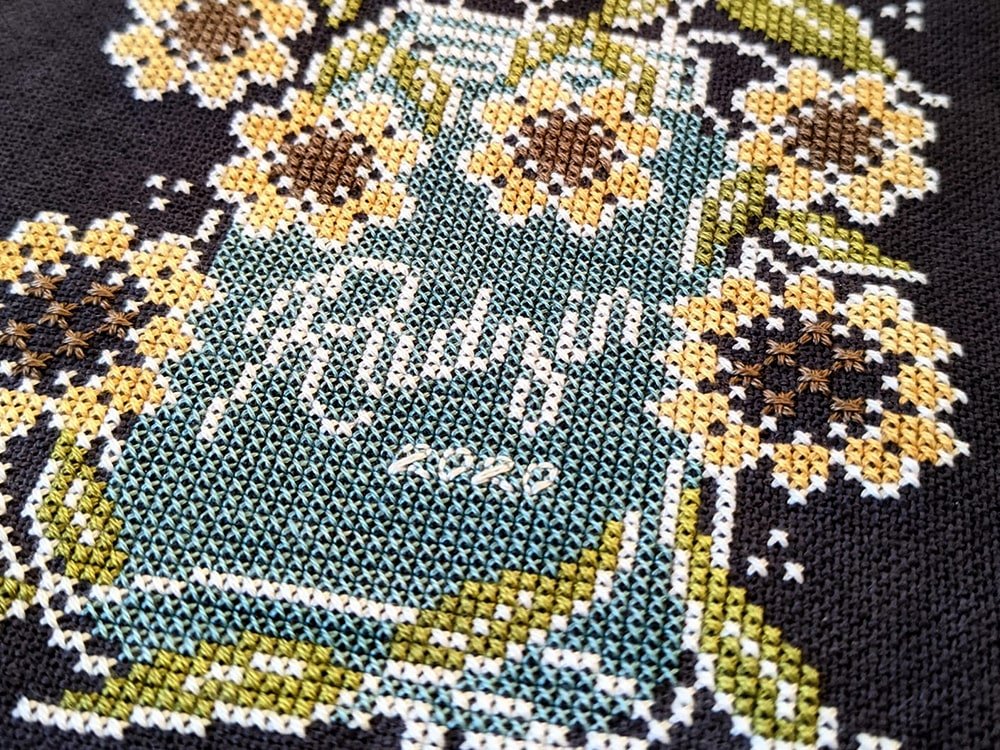
Invest in a really good stitching light. It’s better to have some sort of direct lighting aimed at your project.
Keep in mind that light temperatures are measured in Kelvin (K). Anything that is 5,000 K and above is perfect for stitching because it produces that cool toned light.
Similarly to stitching with daylight, fluorescent bulbs produce a cool light. This is why I always have an easier time stitching on black while I’m at work.
If you can’t make it outside or stitch by a window, bring your stitching to the office with you and stitch on your break. It’s the next best thing.
This is my favorite light and magnifier combo that my husband bought me as a present one year. I never knew I needed it, but I use it all the time!
3. Cross Stitch with a Light Pad
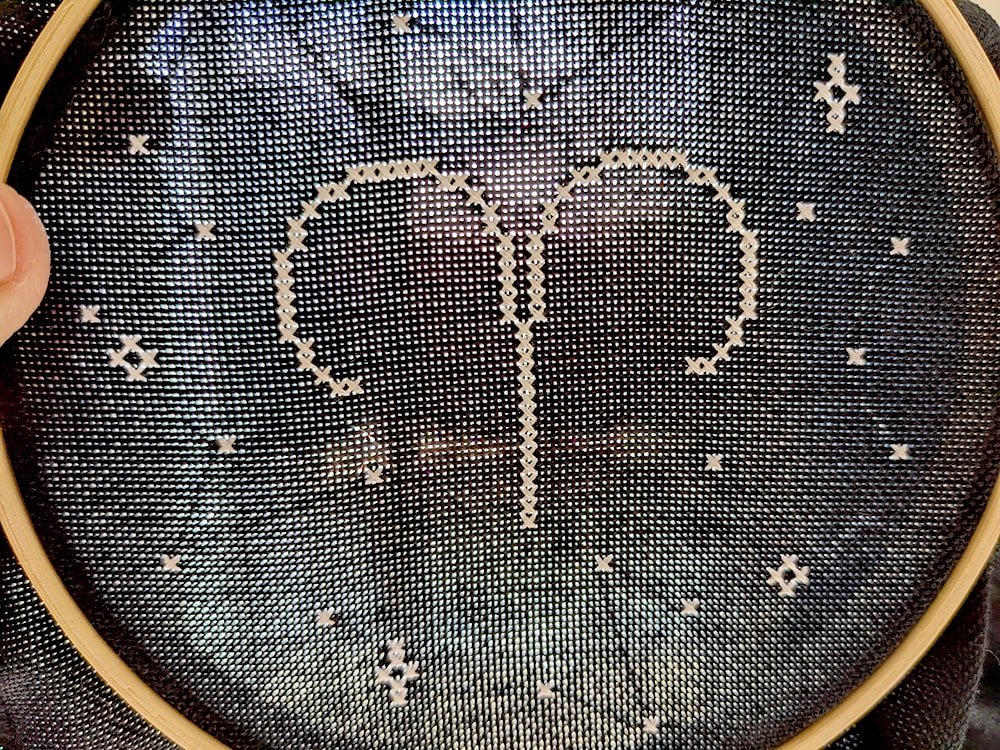
Along with having great light from above, you will also want light from below.
Having your fabric backlight will make finding the holes easier. The light will pass through the fabric.
If you do not want to get a light pad, you could also hold your stitching up to the window while it’s daylight or in front of a laptop screen.
Check out my full list of cross stitch accessories that are must haves!
4. Use Contrast to Your Advantage
Try stitching over a lighter background. Use a white pillowcase or towel on your lap to highlight the holes.
It makes a huge difference compared to stitching black over a dark background.
Any light colored surface will do. It’s all about CONTRAST!
5. Use a Magnifier
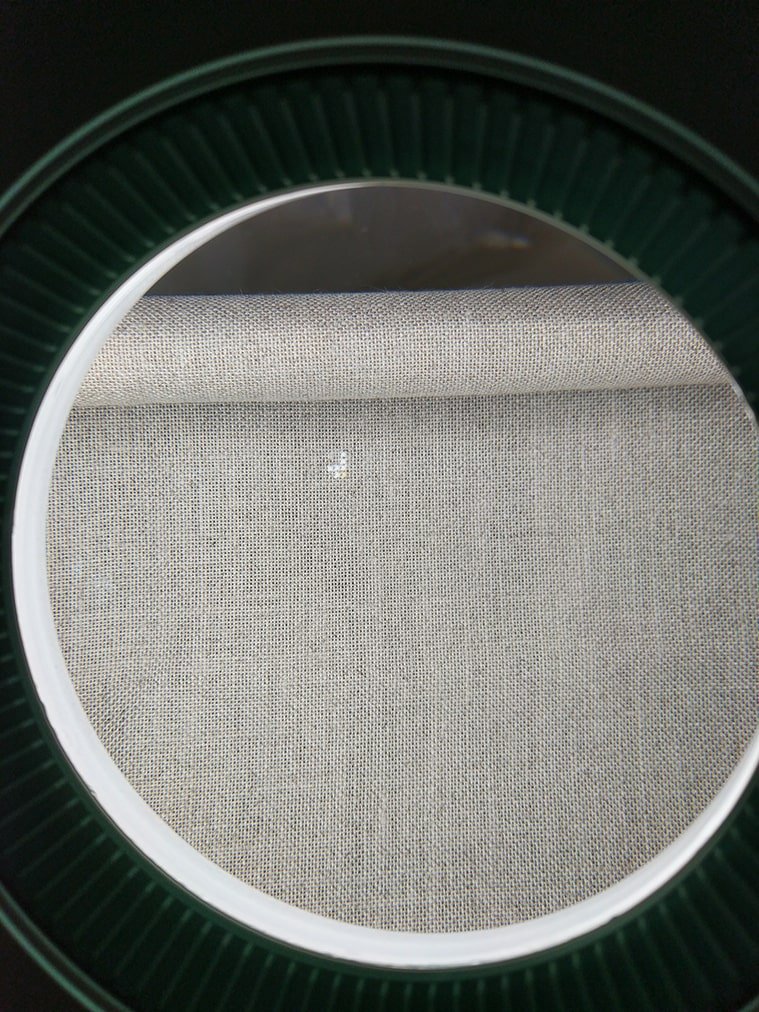
Magnifying the fibers of the fabric will enhance your ability to stitch on black and dark fabrics. Zooming in on the portion of the project you are working on will greatly help you count stitches.
There are so many magnifiers to choose from. There are ones that clip onto your hoop, clip onto eyeglasses, and standalone options. Go with whatever magnifier suits your needs. I love my light and magnifier combo.
6. Use a Hoop or Frame
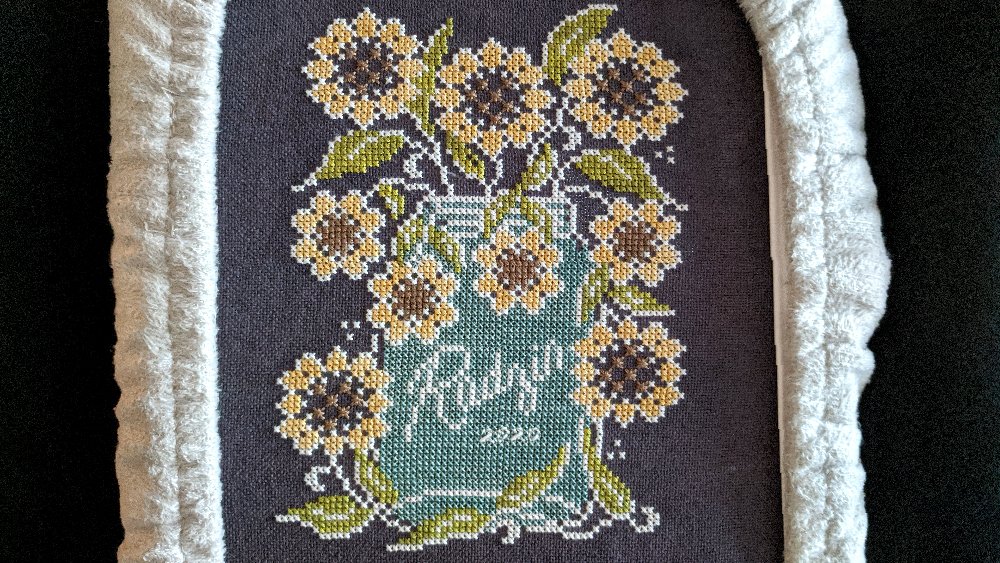
Using a hoop or frame will stretch the fabric, allowing light to pass through the holes more easily.
This will allow you to see the spaces that you need to stitch.
Even if you normally don’t stitch with a hoop or frame, stitching on black fabric can be your one exception.
It’s so helpful to have the fabric help taut by a hoop or frame. Check out my article on the different methods to hold your fabric.
7. Some Fabrics Are Easier to Stitch On

Black aida is easier to stitch on than black linen because the holes on the aida are more prominent.
In addition to choosing an appropriate fabric, the fabric count will also make a difference. Choose a fabric with a lower fabric count. The holes will be more noticeable on a 14 count aida.
Did you know that some brands also have a tighter weave than others?
For example, 28 count Monaco Evenweave by Charles Craft has a tighter weave than 28 count Lugana by Zweigart. They are both 28 count evenweaves but the Monaco is thicker and heavier making the holes harder to see.
8. Grid Your Fabric with Chalk
Gridding is a great way to prevent mistakes on any color fabric, but gridding is especially useful on darker colors. Read more about gridding and my tips on how to minimize cross stitch mistakes in this article.
Another option instead of gridding your fabric, which can be time-consuming, is to dust chalk over the fabric. The chalk will brighten up the fabric while you are stitching. Then wash it off when you are done. The chalk will easily wash out with water.
Make sure your fabric and fibers are colorfast before you wash them! If you aren’t sure you could use a Shout Color Catcher just to be safe.
9. Try Easy Guide Needles
If you haven’t encountered these ball-tipped needles, you are missing out.
Instead of having a blunt tip like typical tapestry needles, Easy Guide needles have a tiny ball point. This makes it easier to find holes because they “guide” your needle through the hole.
This is extremely helpful when working on black fabric to “feel” the fibers of the fabric and stitching in the right place.
In addition, you won’t accidentally pierce through the fibers of the fabric or split your stitches.
10. Consider Alternative Black Fabrics
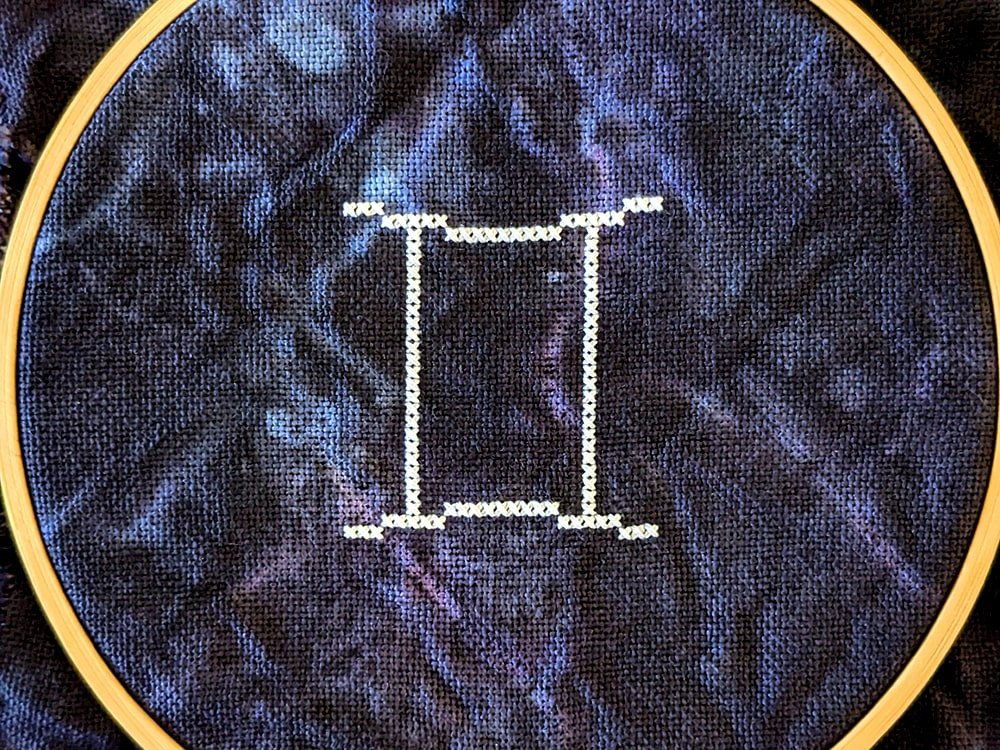
Chalkboard black is a great alternative to black fabric. Many stitchers rave about how much easier it is to stitch on.
Chalkboard black fabric is not quite a true black. I would say that it is in between black and charcoal. It’s equivalent to DMC 3799.
If there is any variegation in the fabric this will assist in stitching as well. A mottled black fabric will provide some clarity of where you need to stitch.
11. Take Your Time
Go slowly. There’s no rush.
If you are getting frustrated, take a break. There’s no harm in setting that project aside and stitching on something else for a while.
The more you take your time, the fewer mistakes you will make. Before you know it, you will have your project complete!
Final Thoughts
Cross Stitching on black or dark color fabrics can be frustrating, but also really rewarding in the end.
You always want to make sure you have great lighting, which is why the first 3 tips are about lighting. Being able to magnify your stitches will also help seeing the holes. Contrast is going to be your best friend when stitching on dark fabrics. The more contrast the better!
Don’t give up! It will get easier the more you stitch on darker fabrics, especially if you use these tips.
I hope you found these tips for stitching on black fabric helpful.
Happy Stitching!


